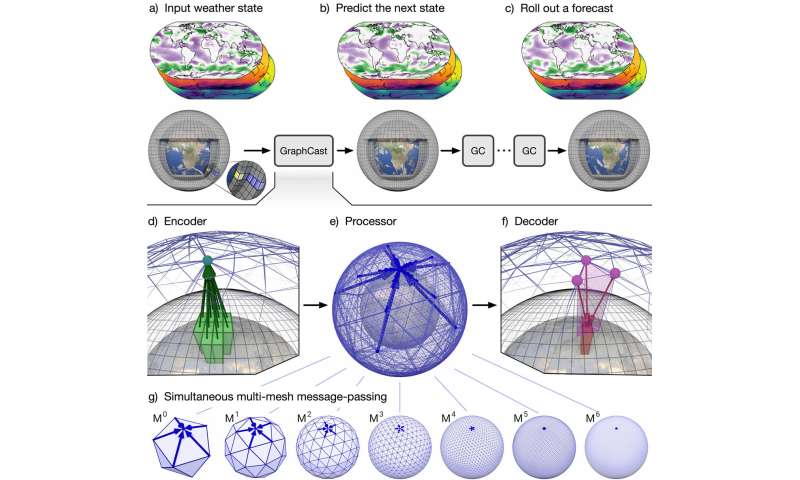Best of Last Week—human evolutionary dead ends, AI forecasts weather in seconds, faces that are more real than real

It was a good week for human behavior research as a team of evolutionary anthropologists led by a group at Cambridge University found evidence that suggests young children may be psychologically wired to flourish with high levels of "sensitive care" and personal attention, based on studies of hunter-gatherer societies. Also, a team of Earth scientists and economists at Stockholm University's Stockholm Resilience Centre created a map of 14 potential evolutionary dead ends for humanity, including global warming, disease and pollution, and suggested ways to avoid them. And a team of forensic scientists at Cranfield University's Recovery and Identification of Conflict Casualties team working with colleagues from the U.S. Defense Prisoner of War/Missing in Action Accounting Agency, located the remains of a World War II bomber pilot eight decades after he was shot down.
In technology news, a combined team from Carnegie Mellon University and Google DeepMind developed RoboTool, an AI system that allows robots to use tools in new ways by leveraging large language models. And a team of electric engineers at EPFL's School of Engineering, developed the first 2D semiconductor with 1,000 transistors—they claim it redefines energy efficiency in data processing. Also, a team at Google's DeepMind project developed an AI-based tool that makes 10-day weather forecasts in just 60 seconds. They assert it is more accurate than current systems. And a team of engineers at Nanjing University developed and built integrated circuits based on 2D semiconductors operating at GHz frequencies.
In other news, a team of medical researchers at the University of Montreal discovered an antibody that stimulates the immune system into eliminating cancer cells by promoting phagocytosis. And a team with members from France, Ireland and Australia found evidence that plants might be able to absorb more CO2 from human activities than previously thought. And finally, a small international team of psychologists conducted a study showing that AI applications are now capable of creating images of human faces that look more real than actual pictures of people.
© 2023 Science X Network